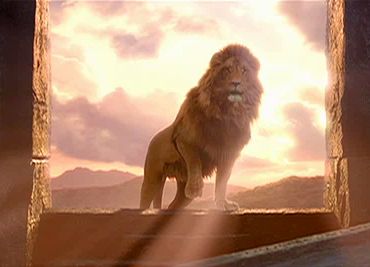C.S. Lewis was a certain Christian but an uncertain Platonist. A comparison to his contemporary A.E. Taylor, author of a magisterial commentary on Timaeus, illuminates the debt Lewis owed the Platonic dialogue.
Taylor was a Christian, an apologist, and (with somewhat less reason than he might have thought) he was proud of his prosody. Lewis was the better writer, though no poet, and the greater apologist (though Taylor’s Does God Exist? is underrated), but sometimes lacks Taylor’s rigor and consistency.
C.S. Lewis baptized my imagination, Taylor my Platonism. Oddly, however, it is C.S. Lewis who captured the essential Timaeus.
Few outside of professional philosophy read Taylor today, but even a quick read of his Commentary reminds anyone who grew up on Lewis how many ideas C.S. Lewis borrowed from Timaeus. If Lewis was never a thorough or consistent Platonist, especially in later life, still Plato’s greatest psychological work, Timaeus, informs much of Lewis’ writing.
This debt makes sense, because for most of Western history the Timaeus simply was Plato. A Latin translation of the dialogue made Plato the consummate cosmologist to scholars of the Middle Ages. Exposure to Aristotle and further evidence modified this Platonic imagery, but never fully supplanted it until modern times.
As author of Discarded Image, Lewis deftly handled this period and his scholarly book on sixteenth-century literature acknowledges the debt this period still owed to Plato’s Timaeus. Any reading of Milton, given an excellent treatment by Lewis in his Preface, also shows the abiding influence of Timaeus.
Despite the use made of it in the Middle Ages, and by Lewis in his fiction, the Timaeus is not primarily cosmological, but psychological. Taylor follows the mistakes of the Medieval reading and describes in loving detail a Timaeus that is primarily a Platonic experiment in telling anachronistic scientific stories. On Taylor’s view, Timaeus does not contain Plato’s opinions, but Socrates.
Timaeus, says Taylor, is the sort of science Socrates would have done if Socrates had done science. The argument spanned hundreds of pages but persuaded few.
C.S. Lewis never wrote a commentary on Timaeus, or so far as I can tell anything dealing with the dialogue directly. But the use he makes of the text in his writing is superficially cosmological but deeply psychological. In doing this Lewis grasps what Taylor, the true expert, missed.
The first line of the dialogue has Socrates counting the guests at an intellectual feast, “One, two, three . . . where is the fourth?” Socrates will then recapitulate a conversation held the day before that is suspiciously like that held in the first five books of Republic.
 When the great lion Aslan counts the children at the Stone Table he asks the same question: “Where is the fourth?” The missing fourth is Edmund, who has become a traitor. At the end of The Lion, the Witch, and the Wardrobe Edmund is redeemed and becomes a king in Narnia . . . remembered as “King Edmund the Just.”
When the great lion Aslan counts the children at the Stone Table he asks the same question: “Where is the fourth?” The missing fourth is Edmund, who has become a traitor. At the end of The Lion, the Witch, and the Wardrobe Edmund is redeemed and becomes a king in Narnia . . . remembered as “King Edmund the Just.”
It is surely no accident that the Republic has the search for justice in the soul as its theme and that the main interlocutor for Socrates, Glaucon, is missing from the Timaeus. If his little Platonic joke is intentional, Lewis has grasped a point about Timaeus Taylor misses: the cosmology of the dialogue is an attempt to find justice.
Republic uses the image of a city, but it has proven too small to find justice, and so now Plato will use the largest image of all, the cosmos, to look for justice so he can recognize it in when he turns to peer into the soul of a human being.
Understanding Plato’s object makes sense of the part of the dialogue — the myth of Atlantis — that is often skipped by modern philosophers for the more analytic sections that follow. Later at 28b, Socrates will solve the problem posed by Parmenides: how can change occur when that which is not cannot be. He will do so by a biological analogy: becoming exists as a state “between” is and is not.
The myth of Atlantis is a “becoming.” Plato creates a new world with a fantastic history that contains truth, at least as much truth as most of the images we receive from the “becoming” state in which we presently live. Over against “the becoming,” however, stands “what should have become” — and since this is a better reflection of the eternal existence Good (the only being that “is”) what should have become has a reality that what became cannot have.
There are for Plato three histories: bad fiction, mere lies, myth, and what became. What we call history if it lacks justice also to that existence falls short of being and so the more likely story, the myth: what should have been, has a truth that mere history lacks.
Many children and C.S. Lewis grasped this intuitively. Narnia is not historical; it is mythic. To the extent that Narnia, like Atlantis, tells a story of what should have been in justice as opposed to what “happened” in the perverse world it is not less but more “real” than history.
Where Lewis and Plato diverge is where Christianity and Plato part ways: Plato believes that the cosmos contains irrational laws that prevent perfect justice while Christian knows the cosmos is fallen from perfection because of separation from God.
The echoes of Timaeus continue through the entire Narnian canon. Professor Kirk in The Last Battle says “It is all in Plato” (twice!) just before the children discover that paradise will be a progression of “becoming.” It will always be “further up and further in.”
Plato poses a recapitulation theory for the human soul in Timaeus (building on the myth of Er in Republic). There is no heaven for Plato, though Republic hints that some souls may stay in the astral plane. Lewis enriches Plato when the Narnian myth demonstrates that eternal progression is compatible with a blessed afterlife.
Lewis shows humanity has been, is, and will be saved. Justification has a forensic element, but sanctification and glorification are a process in his myth making.
This progression reminds the reader of Timaeus of the recapitulation of the human soul from fish to fowl to female to philosopher that will lead to heaven. If Plato’s reader recalls that he is writing in search of an individual just soul and not “doing science” in the contemporary sense of that word, then “recapitulation” becomes more plausible.
Each human being can “devolve” or “evolve” as he pursues the Good. He can be sanctified. Plato may (or may not) believe that individual’s souls actually recapitulate after death, but that is incidental to his point. I can become a beast or a human as I am changed by my education and choices. What is missing for a Christian in this account is any idea of the Incarnation or of grace from God. To ask the Good to notice humanity is an injustice, a gross impiety. God is Good and to ask Him to consider even for a moment anything less than Himself is wrong.
Plato never considers that God might love creation, since the Homeric and Hesiodic religion he inherited left any idea of divine love suspect or horrifying.
Still in his Atlantis myth Plato attempts to show what history should be: hubris is punished, tyranny vanquished, reason rewarded. He follows this with three further myths . . . with each one illuminating the next much as the individual panels of an icon screen comment on each other. He tells a supernatural creation myth, a more naturalistic myth, and an account of the human body. In each story, Plato strives to show what should be despite the fact the cosmos falls short of perfection. The myths serve the reader if they enable him to see his soul and consider it. The goal of the myth-making is the examined life.
The Narnia books, like all the great Platonic dialogues, tell myths in order to show readers an image of their own soul.
The Lion, the Witch, and the Wardrobe is seminal, creating the conversational world not unlike the early storytelling of Phaedo or Phaedrus. Narnia is simpler in LWW, just as the cosmic accounts in Phaedo or Phaedrus are less complex (or “sophisticated”) than those of Republic and Timaeus. We come to the Timaeus with knowledge of the Platonic “mythic world,” of winged horses, rolling men, and spherical heavens, because of the early dialogues.
Prince Caspian functions as a “return” or recapitulation of the story. It contains longish “remembrances” by characters, as does the start of the Timaeus. Plato forces readers to remember (which is his definition of learning), as does Lewis in Prince Caspian.
Voyage of the Dawn Treader is a sea myth like that of Atlantis. Atlantis is an island empire that threatens the world through invasion. Atlantis drowns when Zeus punishes the island for pride. Lewis inverts this myth by having his Narnians invade the islands with the best of them “drowning” themselves in an act of humiliation.
The Silver Chair goes “underground” to the foundations of the Narnian world. A prince is rescued from a cave and restored from a shadow-land by remembering reality above. This Narnian story is about reality versus illusion or appearance. Giants appear to invite friends to dinner, while dreaming of having dinner of friends.
The Horse and His Boy returns to the Narnia of the first book to show a more “political” or human history than legend of the end of LWW. Plato’s second creation account in Timaeus 49 moves from legend, the supernatural creation of 28ff, to a more prosaic account of the Narnian Golden Age.
The Magicians Nephew has Lewis the Christian returning and expanding on the divine creation account. While Plato moves through the supernatural account to end in the more naturalistic story, Lewis starts with the rich legendary language of the end of LWW, presents a human account of that time in HHB, but then returns to the divine in MN.
Aslan, like the Demiurge of Plato, is involved in creation, but unlike the Demiurge he does not abandon his creation. The Last Battle shows this culmination in the redemption of individuals, even through the “loss” of the whole of Narnia. All those worthy of recollection are recalled to adventure forever, while the petty are lost to self.
The end of Timaeus has a focus on the human body that recalls this focus on the individual at the cost of the cosmic. Unlike The Last Battle, however, the Timaeus has a very unsatisfactory ending. One hopes for more, but the ending is very abrupt. We are promised more to come at the start of Timaeus, but the next dialogue in a sequence of three, Critias, was never finished and the third (Hermocrates) does not exist at all. The Incarnation, present from LWW forward, gives the Narnian myth a more satisfactory end than Plato’s myth making.
The Laws, Plato’s last dialogue, is unfinished and unpolished. Plato lost hope before he lost his life!
Not so Lewis: he is the only fantasy writer outside the Bible who kills all his characters, destroys his imaginary world, and leaves the reader feeling good about it. Plato finishes his work without Socrates even appearing in Laws and it is as jarring as if Lewis had substituted the Animal Stranger for Aslan in The Last Battle.
Taylor read Plato and has been accused of putting too much Christianity in his interpretation of the philosopher. Lewis read Plato, but bent him to his Christianity. In the end, it was Lewis, the literary man and mythmaker, who used Plato has Plato was and finished his incomplete task.
Dare I say that the Last Battle is the Hermocrates?












